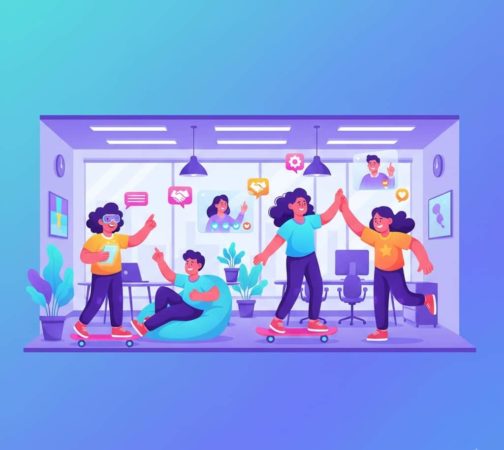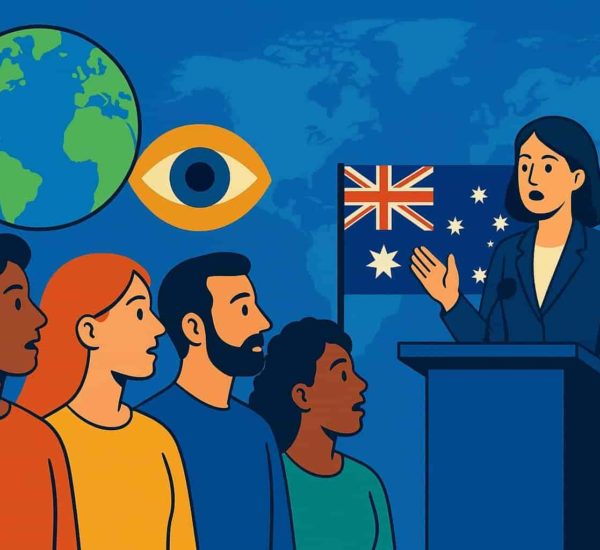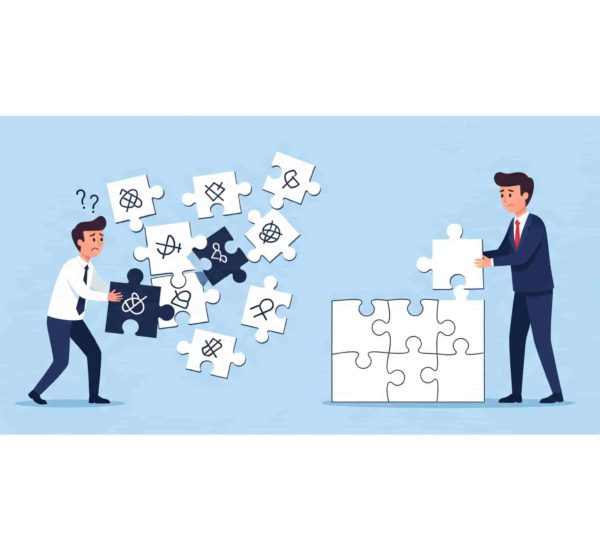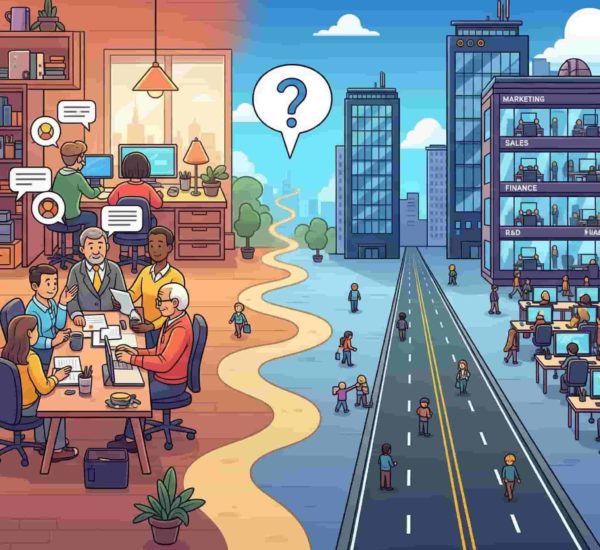In today’s evolving workplace, success depends on how well organizations connect culture and technology in HR. The Quantum Workplace 2025 report emphasizes that culture and strategy must move in sync-and HR technology now plays a central role in driving that alignment.
For small-to-mid-market companies, this isn’t about adopting every new app-it’s about building an HR tech strategy that reflects the organization’s identity. HR automation tools should nurture a flexible work culture, encourage inclusion, and power data-driven HR decisions.
When culture and systems reinforce each other, HR teams can create a connected workplace that drives collaboration, transparency, and growth. This blog explores how forward-thinking HR professionals can align values, tools, and governance to prepare for the future of work-plus a simple checklist to optimize your HR systems and tools so culture always comes first.
Checklist: How HR Can Align Culture and Technology for the Future of Work
Bringing culture and technology in HR together takes more than implementing new software. It’s about intentionally choosing tools and systems that reflect how your people work, collaborate, and grow. Here’s a practical checklist to help HR teams ensure every part of their HR tech stack supports the company’s flexible, inclusive, and data-driven culture.
1. Start With Cultural Clarity
Before exploring new HR technology, define the culture you want to strengthen. Are you aiming to build a more connected workplace? Do you value autonomy, transparency, or collaboration?
Document these principles and use them as a filter for every HR tool you evaluate. When culture is clearly defined, it becomes much easier to align technology and strategy.
2. Audit Your Existing HR Tech Stack
Review the systems you already have-from time tracking to engagement surveys. Are these tools encouraging accountability and inclusivity, or creating friction?
For example, AttendanceBot can reinforce a flexible work culture by simplifying attendance tracking, leave management, and remote work transparency-all within Slack or Microsoft Teams. Each tool in your stack should serve a similar purpose: enhancing experience, not adding complexity.

3. Prioritize Tools That Reflect Employee Experience
Your HR tools are often employees’ first interaction with HR processes. Choose platforms that are intuitive, mobile-friendly, and transparent. Whether it’s managing time off, recognizing peers, or accessing performance insights, your employee experience tools should make work easier and culture stronger.
4. Establish Governance and Ownership
Aligning culture and technology in HR also means managing them responsibly. Create clear governance around tool ownership, data access, and integration.
This ensures your HR systems and tools remain compliant, secure, and aligned with both organizational and cultural goals-especially important for small-to-mid-market companies with growing teams.
5. Embrace a Data-Driven HR Mindset
Culture thrives on trust and transparency, and data helps enable both. Use analytics within your HR automation tools to understand engagement trends, absenteeism patterns, or employee sentiment. When HR uses data thoughtfully, it not only drives decisions but also builds credibility as a strategic partner.
6. Continuously Optimize and Communicate
Technology evolves, and so does culture. Revisit your HR tech strategy regularly to ensure every system still supports your values. Communicate updates with employees to reinforce how these tools make work more inclusive and connected. A future of work mindset means staying agile and open to change.
Aligning HR Tools With Company Values
Choosing the right HR systems and tools isn’t just about features-it’s about alignment with the culture you want to foster. Every platform in your HR tech stack should reinforce the behaviors, norms, and values your organization champions. Here’s a mini-framework to evaluate whether a tool is a good fit:
- Reflects Core Values: Does the tool support collaboration, transparency, inclusivity, or other values your company prioritizes?
- Enhances Employee Experience: Is it intuitive, accessible, and helpful for employees in their day-to-day work?
- Enables Data-Driven Decisions: Can it generate meaningful insights for HR teams without adding unnecessary complexity?
- Supports Flexible Work: Does it accommodate hybrid schedules, remote teams, and adaptable workflows?
Common Pitfalls to Avoid
Even the best intentions can be undermined if HR teams aren’t careful. When aligning culture and technology in HR, watch out for these common mistakes:
- Adding Tools Without Cultural Fit: Implementing a new platform because it’s popular or feature-rich may backfire if it doesn’t align with company values.
- Ignoring Governance and Data Privacy: Without clear ownership, processes, and security measures, even culture-aligned tools can create confusion and risk.
- Overloading Employees With Platforms: Too many systems can reduce productivity, create frustration, and dilute cultural impact. Focus on integration, simplicity, and usability.
- Treating Technology as a Standalone Solution: Tools amplify culture-they don’t create it. HR leaders must pair tech with strategy, communication, and ongoing reinforcement.
Avoiding these pitfalls ensures your HR tech stack strengthens your flexible, inclusive, and data-driven culture rather than introducing friction or inconsistency.
Embedding Culture Into Everyday HR Workflows
Aligning culture and technology in HR isn’t just about choosing the right tools-it’s about making culture visible in the day-to-day operations of your team. Small, intentional actions can ensure your values are reinforced naturally through your systems.
1. Automate with Purpose
Use HR automation to reduce friction, not replace human judgment. For example, automating time-off approvals or reminders can free HR teams to focus on coaching and engagement, reinforcing a flexible and supportive culture.
2. Integrate Culture Prompts in Tools
Embed reminders, tips, or check-ins that reflect your values. Tools that nudge managers to give recognition or request feedback help make inclusion and transparency part of routine workflows.
3. Make Data Meaningful, Not Overwhelming
Leverage analytics to spot trends that inform cultural improvement patterns in collaboration, recognition, or engagement-but avoid overwhelming employees with dashboards or metrics. Data should guide better experiences, not replace them.
4. Encourage Cross-Team Collaboration
Design workflows that connect different departments or teams. Shared goals, collaborative projects, and transparent task management can turn technology into a bridge for a connected, inclusive culture, rather than just a tracking tool.
5. Reinforce Through Communication
Use your HR systems to amplify culture consistently. Automated announcements, feedback loops, and recognition programs can all be configured to highlight the values your organization wants to live every day.

Real‑World Example: From Tool to Culture‑Reinforcement
Imagine an HR team at a growing software services firm where the leadership has identified flexible work, inclusivity, and data‑driven HR decisions as key cultural pillars. To align their tech stack with those values, the HR team chose and optimized several systems that illustrate how culture and technology in HR can connect.
Example scenario:
- The HR team introduced a time‑and‑attendance platform that integrates with collaboration tools. Employees can log hours, request time off, signal remote versus onsite work, and get transparency on team availability. Because the tool supports a flexible work culture, employees feel trusted and empowered rather than micromanaged.
- They layered in an analytics dashboard that surfaces attendance, remote work patterns, team collaboration frequency, and inclusion indicators (e.g., cross‑team interactions). This supports data‑driven HR decisions about how workflows, teams, and schedules are operating.
- In parallel, the HR team built recognition workflows into the system: managers and peers can easily give shout‑outs when someone steps up in a remote setting or ensures inclusive collaboration across locations. This reinforces an inclusive culture and makes it visible in everyday operations.
- Rather than simply launching the tools and leaving them, the HR team held monthly check‑ins where team leads review the data together, talk about how remote/hybrid workflows are working (or not), and adjust norms (e.g., “Let’s rotate who leads the remote stand‑up so we don’t favor onsite voices”). The systems become part of the “culture rhythm,” not just administration.
This kind of example shows how aligning systems and tools with underlying values helps shift HR tech from being a back‑office function to being a strategic driver of culture and performance (Quantum Workplace).
Conclusion: Making Culture and Technology Work Together
Aligning culture and technology in HR isn’t a one-off project-it’s a continuous strategy that shapes how your organization works, collaborates, and grows. For small-to-mid-market companies, the right HR systems and tools can reinforce flexibility, inclusivity, and data-driven decision-making, transforming culture from a statement into lived experience.
By following a structured approach-auditing your HR tech stack, evaluating tools against core values, embedding culture into daily workflows, avoiding common pitfalls, and learning from real-world examples-you can ensure that technology amplifies rather than undermines your organizational identity.
Even tools like AttendanceBot can play a role, supporting a flexible work culture by simplifying attendance, leave management, and transparency for remote or hybrid teams. When thoughtfully implemented, the right tool becomes part of the culture rather than just a system.
The future of work demands that HR move beyond administration into strategy. When HR leaders intentionally align tools, governance, and culture, they create a connected workplace where employees feel supported, empowered, and included. The path is clear: evaluate, align, and continuously refine



